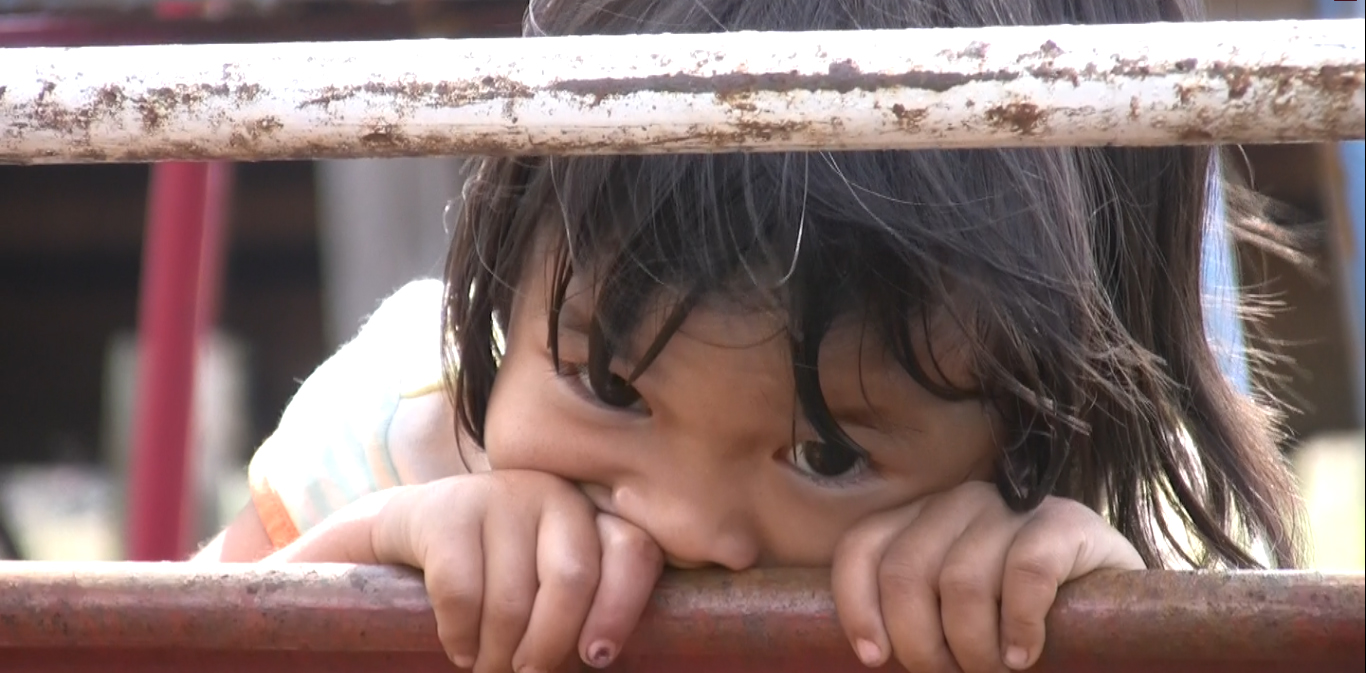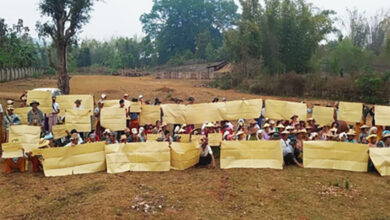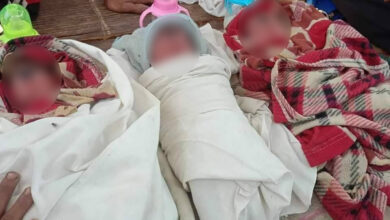The deadly side of development: Klity Village, A cautionary tale

The ongoing legacy of deadly mine run-off for a small town in Thailand could be repeated en masse in Burma, where mining companies have little to no oversight and environmental laws are more lax than
Thailand.
Two small girls sit and sway in a hammock at their playground beside their nursery school of Lower Klity village. They silently stare into the distance without a word.
Besides them flows the cool waters of Klity stream – looking naturally clear, bubbling its way through the trees. It looks like a relaxing environment.
But looks are deceptive – this beautiful stream is poisoned and has poisoned this remote Karen community in Thong Pha Phum district, Kanchanaburi province, Thailand.
Khun Somchai Thong Pha Phum Pathawee is the village elder in Lower Klity village. He shows a court document from an ongoing court battle between villagers and the mining company that has polluted their water.
The court evidence shows a list of 151 villagers who were tested and who were found to have high level of lead contamination in their blood. Some of the evidence indicates that Nai Kathong Sisuramala, 38, blood contains 48.28 mg of lead, a girl Naw Ber Baw, 15, has 47.60 mg of lead and Nai Naing Thong Nasuniwan, 61, has 46.02 mg of lead.
Almost the entire village – in which Khun Somchai estimates around 300 villagers from 50 families live – had been poisoned with lead contaminated water that came from the mine. The mine once operated 19 kilometers upstream, but was forced to shut down in 1998. The local villagers consumed the water in Klity Stream – their only source of drinking water.
Klity village is located in Thailand’s Thung Yai Naresuan Wildlife Sanctuary – A World Heritage listed site.
Khun Somchai told a group of Karen villagers who traveled from Burma to learn about the dangers of lead mining, that can pollute communities for years or even decades.
“Everyone here is ill and contaminated… some are less, and some are high. Some people lost their sight, some children born with brain damage. Some have died. Over 10 families are badly affected. Some children have been born with brain disabilities which cause slow to learning, and some families are sick with dizziness and pain in the joints and head.”
The group of visiting Karen villagers came from Southern Burma, east of Dawei. They live in areas where four tin mines operate – Heinda, Ba Wah Pin and two other small mines. The Heinda tin mine is operated by a Thai company – Myanmar Pongpipat. Mining in the area operates without any environmental concern, and mine operators release waste from the mine to the community through the waterways.
Over four decades ago a Lead Concentrates (Thailand) Company operated a lead mine in the upper Klity steam.
The contamination of Klity stream started more than 10-years before it was forced down after it came into the media spotlight.
The Supreme Administrative Court of Thailand, ordered the government’s Pollution Control Department or PCD to pay 3.8 million baht ($US 122,977) compensation, for lead poisoning to 22 Lower Klity plaintiffs. The Administrative Court in May 2008 found the PCD guilty of negligence for being slow to clean up the stream contaminated with lead.
Villagers are still fighting two civil cases that are pending with the Supreme Court, one involves eight Karen villagers and the other involves 151 villagers (one of whom is now deceased) battling for compensation of over 36 million baht (US$ 1,200,000).
Knun Somchai said the case of the 151 villagers looks to be winning against the company responsible for discharging 10 of thousands of tonnes of lead waste into the Klity stream.
The case is currently ongoing with the company planning to appeal the court’s decision.
Khun Somchai said.
“If you ask if we are happy (for winning the case), we are not happy. Even if we win the legal battle, It could not pay back the people who have died or for the impact on our lives. No one can be born twice. We get the compensation but it will not last long.”
The Supreme Administrative Court also ordered PCD to clean up the Klity stream and reduce the dangerous levels of lead to more acceptable standard.
Knun Somchai said.
“The villagers want the government to restore and clean the stream and return it to normal. The PCD agreed to come and clean the stream, but until now they have not done so.”
Lead content in the river was tested by the PCD in December 2012, and showed that the lead levels in Klity steam is almost 1,000 times more than the acceptable standard, this is despite the mine ceasing to operate 15 years ago.The stream contains 46.16 mg of lead, prawns contain 3.98 mg and shellfish 29.33 mg.
The villagers tried to get other water sources from the mountain, but many villagers had no other choice but to use the contaminated stream for bathing, irrigating their plantations and for drinking water.
Klity villager, Nai Somchad Naing Suphum, told Karen News.
“We don’t have choices we have to drink from the stream. People say we cannot drink the water anymore, but we don’t have any other water – we still have to drink.”
Somchad has five children and two were born with brain abnormalities.
Although the Lower Klity community won a legal fight against the mine, they continue to suffer and with the increased likelihood of genetic deformity due to the poisoning, they will suffer for generations to come.
Nang Tin Gwen, the wife of Nai Somchad Naing Suphum, said she suffered from dizziness and told Karen News.
“I am sad and stressed because of my family illnesses. I can’t go out to work. Two of my children were born with brain disability, as was one of my grandchildren. We don’t have money, because we cannot work and we need money to look after them.”
Saw Ta Mla Baw, a Karen villager told Karen News.
“I am sad. In our area, the run-off from the mine is released into the steam and we are living beside the stream. So far we cannot do anything to protect ourselves. We try to avoid drinking the water from the polluted stream and get it from other streams, but we are not sure how safe that is. The villagers in our area are not aware of the dangers. Here the water looks clear and clean, but they cannot drink it. In our area villagers think if the water is not muddy, they can drink.”
Saw Ko, who traveled with the Burmese villagers told Karen News.
“Villagers downstream of the Heinda tin mine (in Burma) have been using the polluted stream, they are not aware of the possible dangers.”




